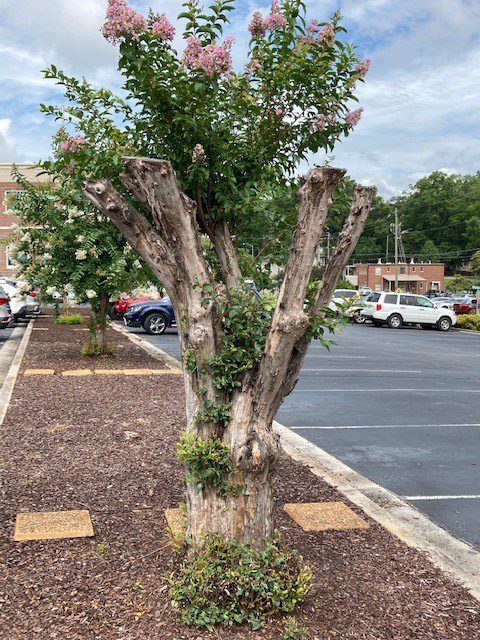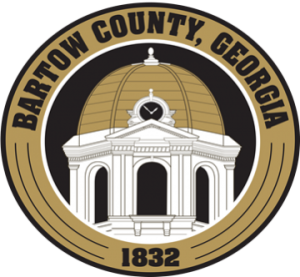The crape myrtle (Lagerstroemia indica) is one of the most commonly planted ornamental trees for home landscapes and urban areas. By definition, crape myrtle is technically a small tree or large shrub. Crape myrtle is one of the most popular flowering shrubs/trees grown in Georgia because it provides abundant summer color with minimal maintenance. Crape myrtle is ideally suited for community plantings since it is long-lived, withstands droughts after becoming established, and is relatively free of disease and insect difficulties. Flower colors range from red and pink to lavender and white.
During recent years considerable breeding work has resulted in a number of new crape myrtle cultivars. There are many cultivars on the market that range in height from less than 3 feet to more than 20 feet, making it one of the most versatile plants. Some cultivars can be used as small foundation shrubs while others as specimen trees. Many of the newer cultivars also have improved flower color, better fall leaf color, handsome bark and better cold and disease resistance than the old seedling types.

For strong growth and abundant flowering, plant crape myrtles in full sun. Heavy shade will reduce growth and flowering and will increase disease problems such as sooty mold on the foliage and powdery mildew on the flower buds and young growth. Large shade trees will also compete with the crape myrtle for moisture, causing poor growth and flowering. Lack of sunlight and moisture are common causes of poor growth and flowering.
It is a common misconception that crape myrtles require pruning in order to flower. This is not only false, but has also resulted in virtually millions of plants being pruned very aggressively, a practice commonly referred to as “crape murder.” The most natural and beautiful crape myrtle trees result from limited or no pruning. In addition, aggressive pruning leads to increased suckering (shoots arising from below-ground roots), which is not only undesirable, but it could result in powdery mildew spreading from the suckers to the canopy of the tree. Aphids are also attracted to the succulent growth, which results from aggressive pruning.
It is far better to plant dwarf, or semi-dwarf varieties which grow to desired mature heights than to continue fighting with a more vigorous, larger cultivar planted in a too-small space. Choose the right variety for your space, and you’ll rarely have to prune a crape myrtle! Excessive pruning can shorten the life of a crape myrtle and potentially expose the tree to lethal insects (i.e. ambrosia beetles) and disease. Another reason not to participate in “crape murder” like your neighbors is that it looks terrible and causes a weak, prolific branching structure that will easily break in the wind and cause branches to hang low—hitting you or your car every time you pass by the tree. This, in turn, creates a never ending cycle of pruning that ultimately doesn’t solve the problem that you created. Crape murder unnecessarily creates more work—that’s job security for landscapers who provide this service.
Crape myrtles in tree form make wonderful accent plants or specimen trees. Many cultivars develop attractive trunks with exfoliating bark that add interest to the winter garden. To develop a young tree’s shape, select three to five radially-spaced stems slightly leaning to the outside, these will become the main trunks. Then remove side branches from these shoots about halfway up their height. As the plant grows taller, lower branches can be removed each year so the canopy begins 3 to 5 feet above ground level. You may need to remove suckers periodically in order to maintain the desired tree shape. The seedheads are an attractive feature and should be left on the tree. As the new growth pushes out in the spring, the seedheads will fall off. As your crape myrtle tree matures, you can sit back and enjoy the shade, knowing that you don’t have to prune it every year.
###
Paul Pugliese is the Extension Coordinator and Agricultural & Natural Resources Agent for Bartow County Cooperative Extension, a partnership of The University of Georgia, The U.S. Department of Agriculture, and Bartow County. For more information and free farm, lawn, or garden publications, call (770) 387-5142 or visit our local website at ugaextension.org/bartow.
